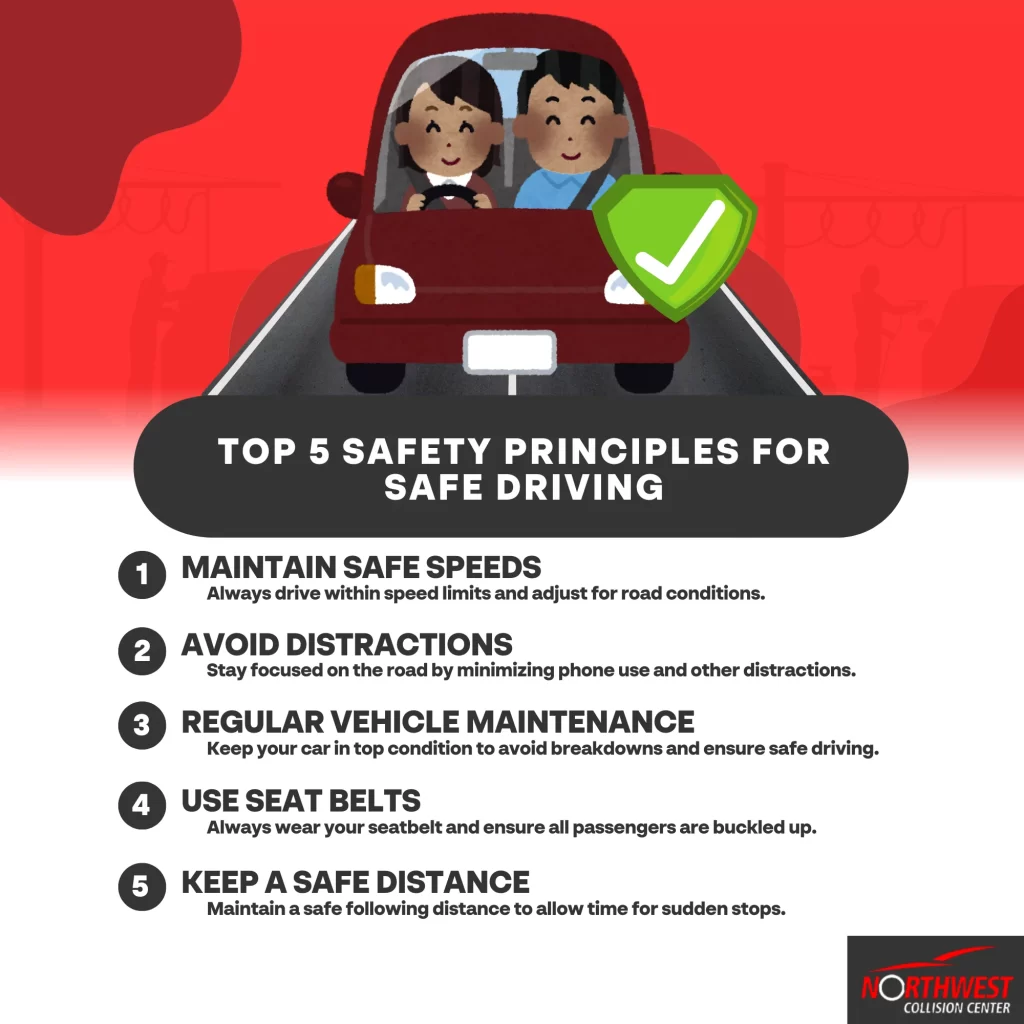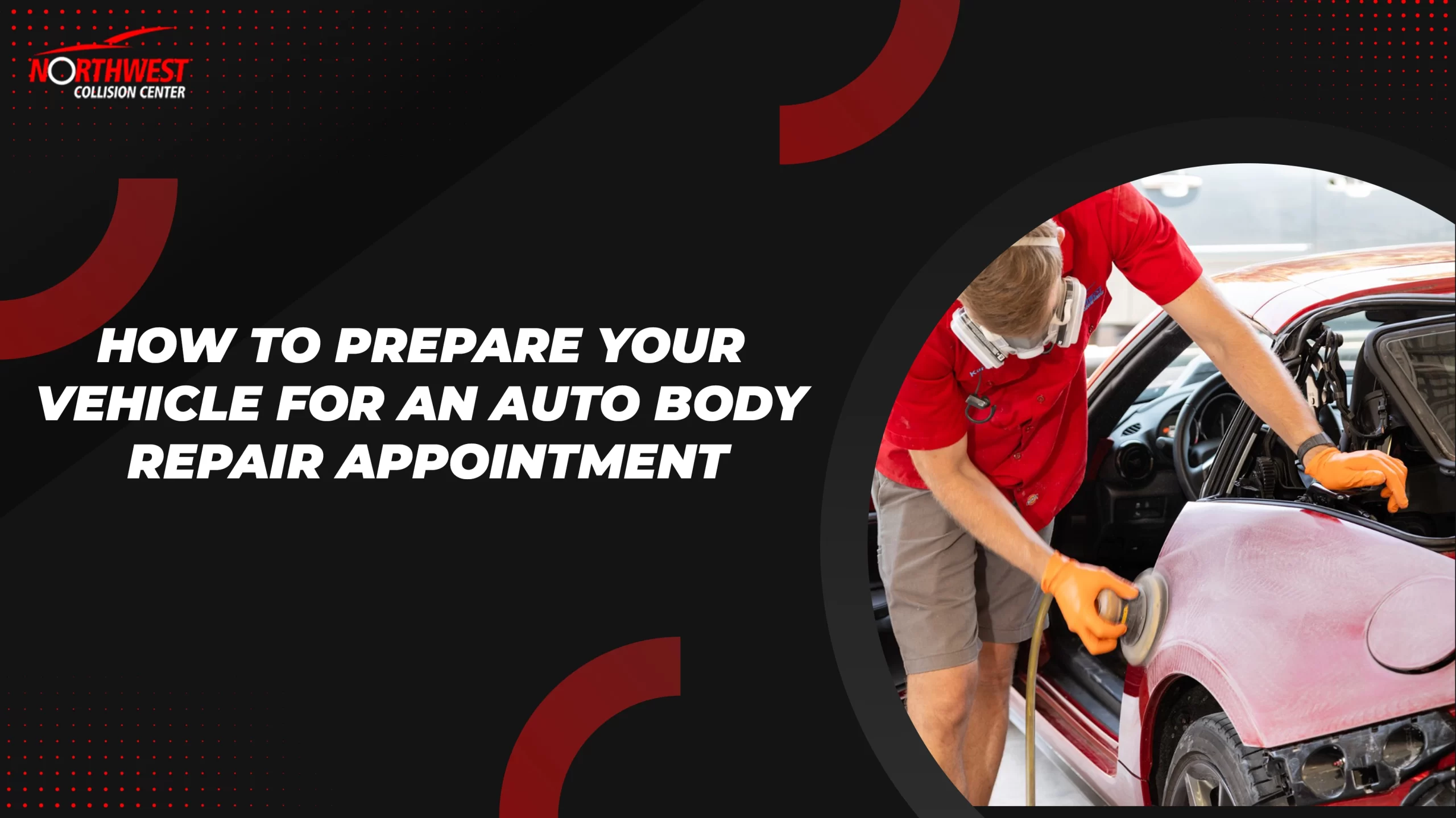To guarantee safety while driving, you need to follow several basic principles. Practice defensive driving by anticipating hazards and maintaining a safe distance from other vehicles. Keep your focus sharp by avoiding distractions, like texting or adjusting the radio. Control your speed according to road conditions and traffic flow, especially near intersections. Position your vehicle correctly in the lane to reduce blind spots. Finally, implement safety precautions like making sure your vehicle’s in peak condition and using turn signals. By applying these principles, you can markedly enhance safety on the road, leading to a more informed driving experience to explore.

Key Takeaways
- Maintain a safe following distance to ensure adequate reaction time in case of sudden stops or emergencies.
- Stay focused and avoid distractions, such as texting or adjusting the radio, to improve road awareness.
- Adhere to speed limits and adjust speed according to traffic conditions for enhanced safety.
- Regularly check vehicle condition, including brakes and tires, to prevent mechanical failures while driving.
- Use turn signals and other communication methods to clearly convey your intentions to other drivers.
Practice Defensive Driving
When it comes to driving, practicing defensive driving is essential for your safety and that of others on the road. Defensive driving involves anticipating potential hazards and making decisions that minimize risk. You’re not just reacting to what’s happening around you; you’re actively working to avoid accidents. This proactive approach aligns with the low-risk driving definition, which emphasizes strategies that reduce danger while behind the wheel.
To practice defensive driving effectively, maintain a safe following distance and stay aware of your surroundings. Regularly check your mirrors and scan the road ahead for any unexpected obstacles or changes in traffic conditions. Always anticipate the actions of other drivers, as their unpredictability can lead to sudden hazards.
Additionally, verify your vehicle is in good condition, as mechanical failures can contribute to dangerous situations. By adopting these habits, you enhance not only your own safety but also that of everyone else on the road.
Stay Focused and Avoid Distractions
Defensive driving sets the stage for a safe driving experience, but it’s equally important to stay focused and avoid distractions while behind the wheel.
Distracted driving, particularly texting and driving, considerably increases your risk of accidents. When you take your eyes off the road or your hands off the wheel, you’re not just jeopardizing your safety; you’re endangering everyone around you.
To maintain focus, keep your phone out of reach or use hands-free technology if necessary. If you receive a text or call, wait until you’ve stopped safely to respond. It’s vital to understand that even a few seconds of distraction can lead to catastrophic consequences.
Additionally, be mindful of other potential distractions, such as adjusting the radio, eating, or engaging in conversations with passengers. Each of these activities can divert your attention from the road.
Cultivating a focused mindset allows you to anticipate hazards and respond effectively, enhancing your ability to drive defensively. Ultimately, staying focused and avoiding distractions is essential for ensuring your safety and that of others on the road.
Proper Speed Control
Maintaining proper speed control is essential for safe driving and considerably reduces the likelihood of accidents. One of the basic principles of driving is to adhere to speed limits, which are established based on road conditions, traffic, and safety considerations. By driving within these limits, you mitigate the risk of losing control of your vehicle, especially on curves or during adverse weather conditions.
Additionally, adjusting your speed according to the flow of traffic is important. When you drive too fast or too slow in relation to surrounding vehicles, you increase the chance of collisions. Remember, driving is sometimes a risk, and speed control plays an indispensable role in managing that risk effectively.
Be mindful of your speed when approaching intersections, pedestrian crossings, and construction zones. Slowing down in these areas shows respect for other road users and allows you to react quickly to sudden changes.
Vehicle Positioning
Proper vehicle positioning is vital for guaranteeing your safety on the road and minimizing the risk of accidents. Your car’s placement within the lane and its distance from other vehicles are significant factors in following the principles of driving. Maintaining a safe distance allows you to react promptly to sudden changes in traffic, which can be essential in avoiding collisions.
When you position your vehicle correctly, you reduce the likelihood of blind spots and improve your field of vision. Always be mindful of how distractions—like your phone or loud music—can affect your ability to maintain proper positioning. If you’re distracted, you may drift into another lane or misjudge the distance to other vehicles.
Additionally, consider the road conditions, such as wet or icy surfaces, as they can impact your vehicle’s stability. Adjust your positioning accordingly to guarantee you’re in the safest place on the road.
Implement Safety Precautions
To enhance your safety on the road, it’s vital to implement effective safety precautions before and during your drive. Start by familiarizing yourself with the six action principles of driving, which emphasize being aware of your surroundings, anticipating the actions of others, and responding appropriately. These principles help you maintain control and make informed decisions.
Before you hit the road, confirm your vehicle is in peak condition. Check tire pressure, fluid levels, and brakes. This aligns with the four driving principles of safety: preparation, attention, judgment, and skill. Each principle plays a critical role in preventing accidents and enhancing your driving experience.
During your drive, stay focused and minimize distractions. Keep your phone out of reach, and avoid engaging in activities that divert your attention.
Always use your turn signals to communicate your intentions to other drivers, fostering a safer environment for everyone on the road.
Be Courteous of Other Drivers
Being courteous to other drivers greatly enhances road safety and contributes to a more pleasant driving experience for everyone. When you practice courtesy on the road, you not only protect yourself but also minimize risks for others, especially considering that teens ages 16-19 are how much more likely to be involved in a fatal crash than drivers 20 or over.
Here are some key ways to show courtesy:
- Always use turn signals to communicate your intentions.
- Maintain a safe following distance to allow for sudden stops.
- Yield the right of way when necessary, especially at intersections.
- Avoid aggressive behaviors, such as tailgating or weaving in and out of traffic.
- Be patient and refrain from road rage, even in frustrating situations.
These behaviors align with the 6 action principles of driving, which emphasize awareness, responsibility, and respect for others on the road.
Frequently Asked Questions
How Can I Maintain My Car’s Aesthetic Appeal While Driving Safely?
To maintain your car’s aesthetic appeal while driving safely, regularly inspect for damage, schedule professional detailing, and choose quality repair services. Prioritize safe driving habits to avoid accidents that could detract from your vehicle’s appearance.
What Should I Do if My Car Gets Damaged in an Accident?
If your car gets damaged in an accident, assess the damage immediately, contact your insurance, and seek professional repair services. It’s essential to restore your vehicle’s aesthetics and safety to maintain its value and performance.
How Often Should I Have My Vehicle Inspected for Safety?
You should inspect your vehicle at least twice a year—think of it as giving your car a health check-up. Regular inspections can prevent catastrophic failures and guarantee your safety on the road. Stay proactive!
What Are the Benefits of Professional Auto Body Repairs After an Accident?
Getting professional auto body repairs after an accident restores your car’s aesthetics and safety. It guarantees accurate diagnostics, enhances vehicle value, and maintains your car’s integrity, ultimately providing peace of mind during your driving experience.
How Do Weather Conditions Affect Driving Safety and Vehicle Performance?
Weather conditions greatly impact your driving safety and vehicle performance. Rain, snow, and fog reduce visibility and traction, increasing the likelihood of accidents. Adapting your driving style to these conditions is essential for maintaining safety on the road.
Conclusion
To sum up, mastering the basic safety principles of driving empowers you to protect yourself and others. By practicing defensive driving, staying focused, controlling your speed, positioning your vehicle correctly, implementing safety precautions, and being courteous, you create a safer driving environment. Embrace these principles, and you’ll not only enhance your confidence behind the wheel, but you’ll also foster a culture of respect and responsibility on the road. Remember, every decision you make can save a life—make it count.










